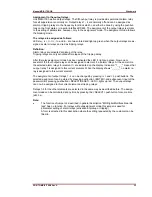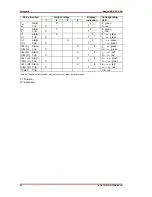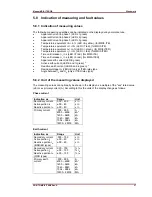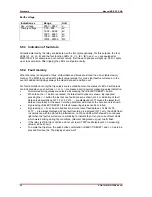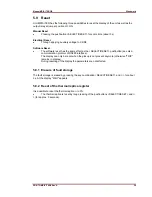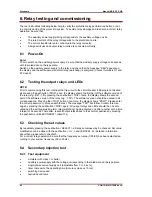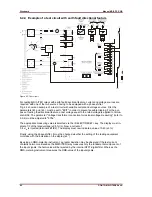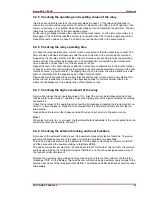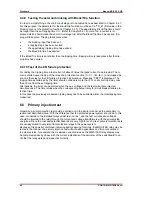
Manual MRI3-ITER GB
Woodward
DOK-TD-MRI3 ITERE Rev.A
29
5.4 Protection
parameters
5.4.1 Pickup value of the thermal overload protection I
B,A
and I
B,T
For basic current I
B
, the max. permissible operating current or optionally the rated current of the ob-
ject to be protected has to be used in either case based on rated secondary quantities. 100% of the
thermal equivalent
then corresponds to the max. permissible operating temperature or optionally
to the rated operating temperature.
Conversion to secondary values are to be done as per the following formula:
,
·
1
,
with I
B,prim
:
max. base current in A
nI:
c.t.
ratio
I
N.MRI
:
rated
current
Example:
,
450;
500
1
;
,
1
450
500
·
1
1
0.9
5.4.2 Constant
k
Constant k describes the admissible overload factor. This factor changes the pickup value and the
tripping value of the relay.
5.4.3 Energizing delay (time) for the thermal overload
In certain applications, like for example during start up of motors, the threshold value for the detec-
tion of the thermal overload k*I
B
> might be exceeded for a short time. The warning relay responds
and the LEDs indicate energizing. This excitation signal remains activated even after completion of
the startup period. Start of a motor being a normal procedure and not a malfunction, the detection
of the energizing for the thermal overload can be delayed here. In case of frequent and permitted
over-load (i.e. for crushers) it might be reasonable to operate this overload with delay.
5.4.4 Time
constant
Details on the time constants
C
and
W
can either be taken from the electrical equipment’s data
sheets or estimated on the base of practical values.
Additional influencing factors are a.o. the environ-mental heat storing and heat conducting capacity
(e.g. mode of cable laying on the ground, in tubes or shafts, or the additional cooling by forced
Convection of transformers through fans).
5.4.5 Pickup current for phase over current element (I>)
The setting value for this parameter that appears on the display is related to the nominal current
(I
N
) of the relay. This means: pickup current (Is) = displayed value x nominal current (I
N
) e.g. dis-
played value = 1.25 then, Is = 1.25 x I
N
.





















